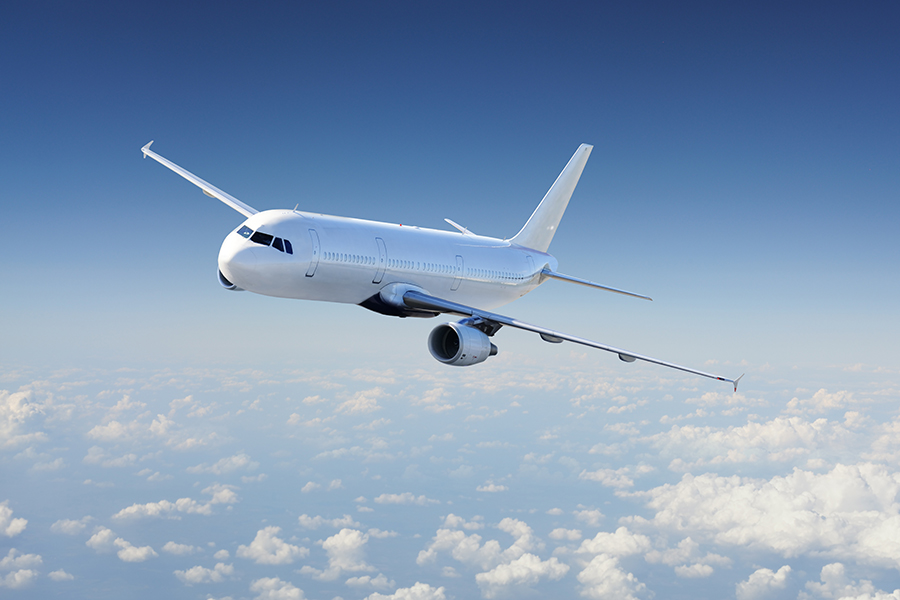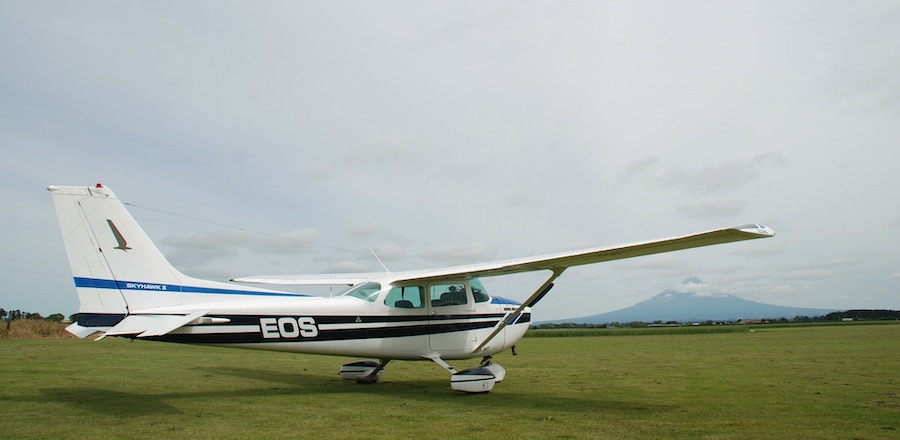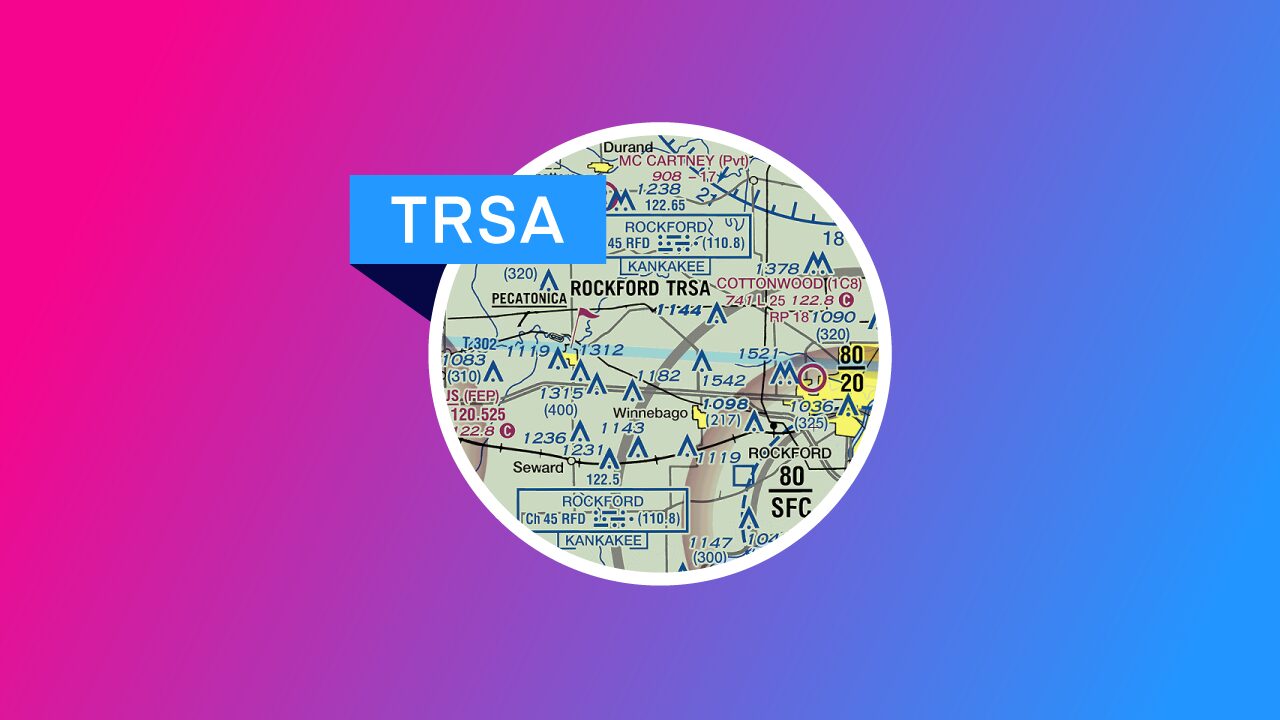-
The Differences Between High Wing vs. Low Wing Aircraft
- Fuel System
- Visibility
- Comfort
- Maintenance
-
Aerodynamic Differences Between High-Wing and Low-Wing Aircraft
- Lateral Stability and Roll Characteristics
- Ground Effect
- Takeoff and Landing Performance
- Stall Properties
- Cruise Properties
-
Pros and Cons
- Low Wing
- High Wing
-
High Wing or Low Wing: Which is the Better?
-
Why Are Most Airliners Low Wing?
- High Wing Airliners
-
Are High Wing or Low Wing Aircraft Better for Training?
-
Conclusion
There are many different types of aircraft wings, but the two most common are the low wing and the high wing.
The critical differences between high and low-wing airplanes are, quite simply, their location in relation to the fuselage. A high-wing airplane has wings placed above the aircraft’s main body, whereas a low-wing airplane has wings below the fuselage.
Each type has pros and cons, and one type is not necessarily “better” than the other. Let’s explore, in detail, the differences between them.
The Differences Between High Wing vs. Low Wing Aircraft
Most commercial aircraft have low wings with engines slung beneath the wing, while private business jets are nearly always of a low-wing design with turbofans or turboprops mounted on the rear of the fuselage.
In general aviation, there is a mix of high and low-wing planes, Cessna’s high-wing designs being some of the most well-known. Small, general aviation aircraft that seat two to four people often have high-wing designs. The decision between a high wing or a low wing in these types of small planes usually depends on pilot preference.
High wings can offer several advantages in small planes, including better ground visibility, more ground clearance, and increased shading of the cabin.
So, what should you look for if you have a choice between the two?
Fuel System
Regarding fuel systems, the main advantage that high-wing planes have is that they can utilize gravity to provide fuel pressure. Low-winged aircraft need to use a fuel pump to pressurize the fuel and feed it to the engine.
High-winged aircraft do also make use of fuel pumps, however. A boost pump in a low-winged aircraft is usually used during startup, takeoff, landing, and sometimes even during the cruise. Boost pumps are used during emergencies (such as a failure of the engine-driven fuel pump) and for priming the engine.
Visibility
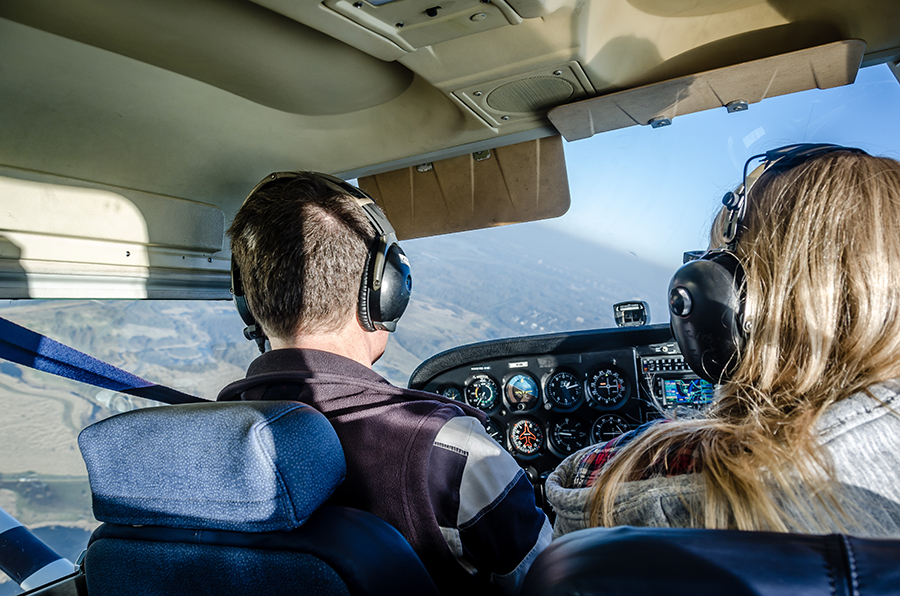
Visibility should be a serious consideration when choosing between a low-wing or high-wing light aircraft. The view from the cockpit is never the same when switching between different aircraft types, but there are some vital differences between high and low-wing aircraft.
A wing is a large object, and, depending on where it’s positioned in relation to your eyes, can obscure quite a bit of the sky. When you sit in a high-wing aircraft, your head is close to the wing, limiting what you can see from your perspective.
Low-wing aircraft tend to have poorer ground visibility compared to high-wing aircraft. This is due to the fact that the wing blocks the view of the ground, making it difficult to see things like runway markings or other aircraft on the ground. This can sometimes be mitigated by using a copilot or a second set of eyes to help spot potential hazards.
High-wing aircraft, on the other hand, have excellent ground visibility. Since the wing is above you, it doesn’t block your view of the ground, making it easier to spot potential hazards.
High-wing aircraft also have restricted visibility, however. When a high-wing aircraft banks into a turn, the wing blocks the pilot’s view of where they’re going. It is, therefore, crucial to check before turning so you can see if there are any hazards in the way, such as traffic or weather.
You will also have to move your head significantly forward to see where you’re going during the turn, which makes turns onto a visual reference point (such as a runway) more difficult. If you want to execute maneuvers such as steep turns, standard turns, or spirals that necessitate visual cues, you’ll need to keep the wing position in mind.
Low-wing designs don’t have these issues since there is always a clear view ahead and toward the turning side.
It is crucial to be aware of the blind spots for both high and low-wing planes, as they can be dangerous. Whether you are flying a high or low-wing aircraft, you must be aware of its respective blind spots so that you can avoid any traffic or hazards in those areas.
High-wing aircraft have the advantage if you want to see the ground. They’re perfect for those who want an unobstructed experience for activities like sightseeing or aerial photography. The only drawback is that the landing gear and wing strut still partially block the view.
Comfort
Low-wing planes usually require the pilot and passengers to climb up onto the wing to get in and out, which can be difficult. The most common low-wing trainer family of aircraft, the Piper Cherokee family, only has one door on the right (starboard) side. This means that the pilot must enter first, and then the passengers enter last. In addition, they must climb over the seat and through the small cockpit area.
Some newer designs (like the Diamond DA40 Star) come with a lift canopy that makes it easier for people to enter from either side of the plane.
Maintenance
When it comes to small piston engine general aviation airplanes, standard maintenance procedures are largely similar. For small piston aircraft, most maintenance is conducted on the engine and electrical components in front of the firewall or those within the instrument panel. For both these cases, it doesn’t make a significant difference where the wing is located.
But there are practical differences between low and high-wing aircraft for more substantial systems maintenance, such as that required on commercial airliners.
The maintenance required on commercial airliners is extensive and often difficult to perform. The position of the wings on the fuselage can affect how easy or difficult this maintenance is. For example, since most commercial jet aircraft have low wings, the maintenance crew can easily access the engines, landing gear, and other vital components.
Conversely, aircraft with high wings often require a ladder or other elevated platform to allow the crew access to these components. This can be more difficult and dangerous, as the crew must be more cautious in their movements, and routine maintenance may require special equipment or hangars.
If you’re thinking of owning or operating an aircraft, understanding the maintenance requirements of different aircraft types (e.g., reliability, part availability, age of aircraft) will be more important than where the wings are located.
Aerodynamic Differences Between High-Wing and Low-Wing Aircraft
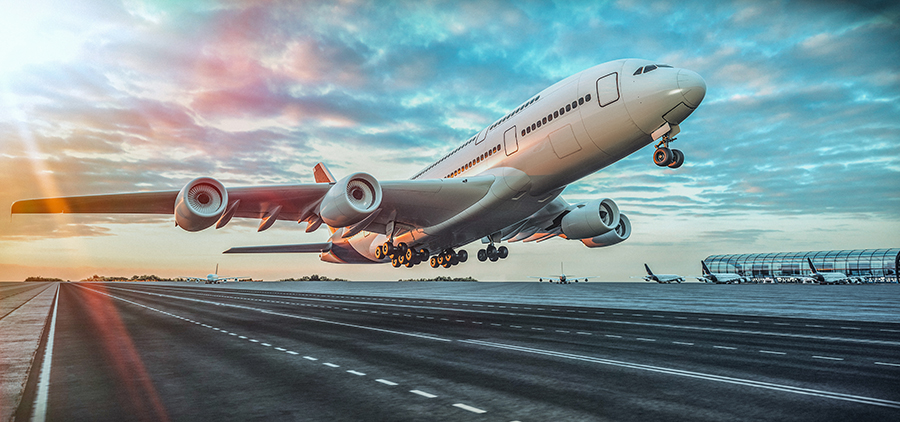
For both high and low-wing aircraft, some of the main differences can be found in these areas: lateral stability (roll), slow speed handling abilities, and general performance (e.g., takeoff and landing distances).
In the real world, however, aircraft are generally only comparable to one another as a whole rather than being compared by wing positions. The choice between a high or low-wing design is generally made by considering the overall performance requirements of the aircraft.
The performance differences between high and low-wing aircraft should be understood, but considering either design, superior would be silly.
Lateral Stability and Roll Characteristics
High-wing aircraft have a center of gravity that sits below the wing, which means the fuselage acts as a pendulum. These increases roll stability compared to low-wing aircraft, where the center of gravity is above the wing.
A high-wing aircraft will be less likely to enter a spiral dive, but more pressure will be needed on the ailerons to achieve a rolling motion.
While the increased lateral stability is generally considered a good thing, this tendency is detrimental to an aerobatic aircraft designed for high roll rates.
Ground Effect
Low-wing aircraft float for longer because they enter the ground effect earlier. This is because their wings are closer to the ground, resulting in an early entrance into the ground effect and, therefore, a more significant reduction in drag compared to a high-wing aircraft.
Because low-wing planes experience a more prominent ground effect, expect to touch down further down the runway compared to a high-wing aircraft.
Takeoff and Landing Performance
The previous discussion of ground effect issues impacts both takeoff and landing performance.
During takeoff, a low-wing aircraft will need a shorter ground roll and be able to clear obstacles more easily due to the wing tip vortices being reduced in ground effect for a longer duration. This same ground effect phenomenon causes landing distances to be increased, however.
Stall Properties
When entering a stall in a high-wing aircraft (with a conventional tail), turbulent airflow from the wing can interfere with the elevator controls. This causes a noticeable buffet.
There will be significantly less buffeting when entering a stall in a low-wing aircraft, as the turbulent airflow from the wing passes mostly underneath the horizontal stabilizer. This creates a smoother stall but with fewer warnings.
A high-wing aircraft will naturally resist a stall and make it more difficult to enter one on purpose due to a stronger pre-stall buffet and decreased elevator effectiveness. In contrast, the low-wing aircraft will exhibit less warning of an impending stall through its stall characteristics in pitch.
Cruise Properties
High-wing aircraft will experience more profile drag and interference drag while on a cruise, negatively impacting performance.
Profile drag is caused by air hitting the front of the aircraft, while interference drag happens when airflow hits different parts of the aircraft.
The landing gear on a low-wing aircraft is attached directly to the wing, with only minimal extra components or fairings required to minimize aerodynamic drag. In contrast, a high-wing aircraft will have landing gear attached either to the wing (which is large, heavy, and not as structurally secure) or to the fuselage.
A high-wing airplane has more “bulk” suspended from the aircraft than a low-wing plane. If a strut is necessary to reinforce the wing of a high-winged aircraft, it will create even more profile and drag resistance compared to a low-wing counterpart.
A low-wing aircraft generally has less drag when compared to a high-wing aircraft, making it more efficient in cruise performance; this means faster speeds and lowers fuel consumption.
Pros and Cons
That was quite a bit of information, and you’d be forgiven for feeling slightly overwhelmed. Let’s condense the most important points into a pros and cons list.
Low Wing
PROS:
- The landing gear structure can be built into the aircraft structure.
- Low-wing aircraft can withstand greater forces through the landing gear and wing structure. They are also considered safer in the event of an emergency landing or water landing. The low wing position will keep the fuselage above any potential impact or water and allow for an easier emergency exit.
- Low wings provide easy access to engines and equipment, simplifying maintenance.
- Low-wing aircraft have greater visibility during turns and fewer blind spots overall.
- Easier refueling.
CONS:
- Low wings have less ground clearance, and engines mounted beneath low wings are more susceptible to debris intake from rough terrain and pod strikes from sharp banks close to the ground.
- Limited ground visibility.
- Small low-wing aircraft are more challenging to inspect during preflight.
- Fewer warnings of an approaching stall.
- Low-wing general aviation aircraft are generally more difficult to get in and out of, and often only have one door.
High Wing
PROS:
- One of the many benefits of high wings is that they free up interior cabin space. This allows for greater flexibility in how the area can be utilized. For example, a high-wing aircraft generally allows for larger cargo and easier loading and unloading.
- High-wing aircraft have better ground clearance (great for bush flying).
- Excellent ground visibility for sightseeing or aerial photography.
- The cabin is easy to get in and out of.
CONS:
- Gear structure needs to be reinforced.
- Commercial high-wing aircraft engines and components are more difficult to check and maintain due to their position above the fuselage compared to low-wing aircraft.
- High-wing aircraft are more affected by crosswinds than low-wing aircraft.
- High-wing aircraft will experience reduced visibility during turns.
- Can only be refueled by climbing onto the wing, typically with a ladder.
High Wing or Low Wing: Which is the Better?
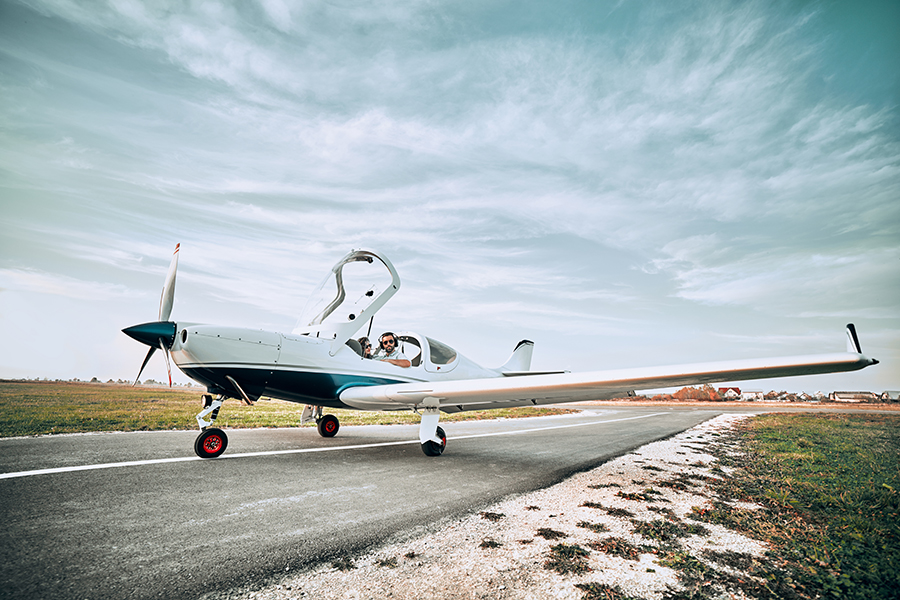
There is no definite better option between high-wing and low-wing aircraft; it all depends on the owner or operator’s needs and what the aircraft will primarily be used for. For example, high-wing aircraft is best for bush flying and sightseeing applications, while low wings might be better suited for commercial operations where aerodynamic efficiency is paramount.
Ultimately, it is up to the pilot or operator to decide which type of aircraft will be better for their needs.
Why Are Most Airliners Low Wing?
The majority of large commercial aircraft have low wings. The primary reason for this is that the cargo compartment and landing gear structure sit below the passenger compartment. This allows for easy access to cargo, fuel tanks, and engines (among other systems) for the ground crew while maximizing cabin space.
It is also significantly easier to evacuate a low-wing aircraft in an emergency, particularly during emergencies such as an engine fire.
High Wing Airliners
There are, of course, exceptions to every rule. Many commercial aircraft, particularly smaller turboprop aircraft, feature high-wing designs.
High-wing designs can be highly beneficial to passenger aircraft when operating on unpaved runways or rough terrain. There is more clearance for the engine, and it prevents the buildup of dust from the ground.
These wings also allow for larger flaps, improving performance during takeoffs and landings on shorter fields. The BAe 146 and ATR series are two examples that utilize this design.
Are High Wing or Low Wing Aircraft Better for Training?
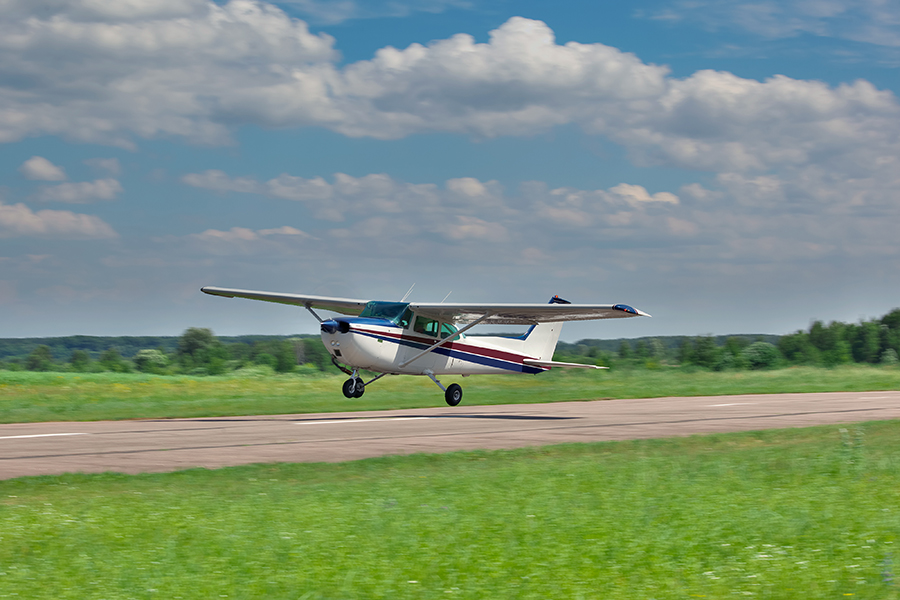
There is no definitive answer when it comes to deciding between a high or low-wing training aircraft – the choice comes down to pilot preference. The differences between these types of aircraft shouldn’t influence your decision about which flight school to go to.
The most important factor when choosing a flight school is the quality of its instructors and aircraft. Make sure to ask the school about its instructor-to-student ratio, as well as its track record for producing safe and successful pilots.
Once you have found a flight school that has high-quality instructors, go and take a tour. The school should be able to provide you with detailed information about the aircraft it uses for training, as well as its fleet age and maintenance procedures.
In the end, the most important thing is finding a flight school that you feel comfortable with, with a track record of producing high-quality aviators; Whether the aircraft they use are high wing or low wing shouldn’t make much of a difference.
Conclusion
High-wing and low-wing aircraft have advantages and disadvantages regarding performance capabilities and the practical considerations relevant to their primary task. The best features of high and low-wing aircraft are suited to the aircraft’s primary task. Both high and low-wing aircraft have unique benefits that make them great for different purposes.
